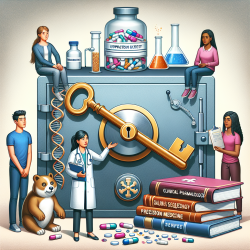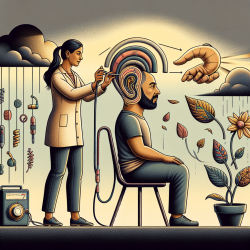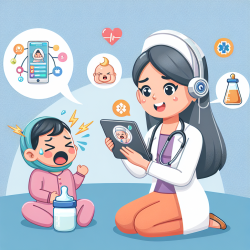Introduction
As practitioners, we constantly strive to improve patient safety and outcomes. A recent study titled An opportunity for clinical pharmacology trained physicians to improve patient drug safety: A retrospective analysis of adverse drug reactions in teenagers offers valuable insights into adverse drug reactions (ADRs) in adolescents. This research highlights the importance of pharmacogenomics and precision medicine in mitigating ADRs, especially in teenagers.
Understanding the Study
The study analyzed data from the FDA's Adverse Events Reporting System (FAERS) from 2014 to 2017, focusing on adolescents aged 12-17. It aimed to identify the most frequently reported medications and their associated side effects. The findings revealed that risperidone was the compound with the most reported ADRs, with males representing 90.1% of the cases. Notably, gynecomastia was the most reported ADR for risperidone.
Key Findings
- Risperidone: High rates of ADRs, especially in males. Consider alternative psychotropic medications for male patients.
- Ibuprofen and Quetiapine Fumarate: Associated with the highest odds of completed suicide in teenagers.
- Ondansetron Hydrochloride: Increased odds of pneumothorax, suggesting caution in patients with a history of pneumothorax.
- Olanzapine and Valproic Acid: High rates of drug-drug interactions.
Implications for Practitioners
The study underscores the need for practitioners to be vigilant about ADRs and consider pharmacogenomic consultations. Here are some steps practitioners can take:
- Review patient history thoroughly before prescribing medications like risperidone, especially in male adolescents.
- Consider alternative treatments for patients with a history of pneumothorax when ondansetron is indicated.
- Monitor for potential drug-drug interactions, particularly with medications like olanzapine and valproic acid.
- Stay informed about pharmacogenomic advancements to personalize patient care effectively.
Encouraging Further Research
While this study provides critical insights, further research is needed to explore the mechanisms behind these ADRs and develop more precise guidelines. Practitioners are encouraged to contribute to this growing field by engaging in research and sharing their findings.
Conclusion
By integrating the findings from this study into clinical practice, practitioners can enhance patient safety and improve outcomes. The role of clinical pharmacologists is crucial in guiding these efforts and advancing precision medicine.
To read the original research paper, please follow this link: An opportunity for clinical pharmacology trained physicians to improve patient drug safety: A retrospective analysis of adverse drug reactions in teenagers.










